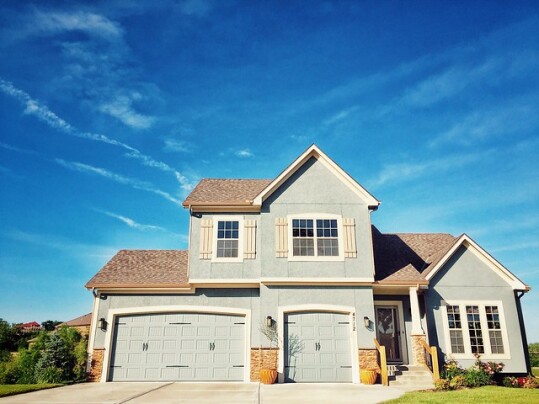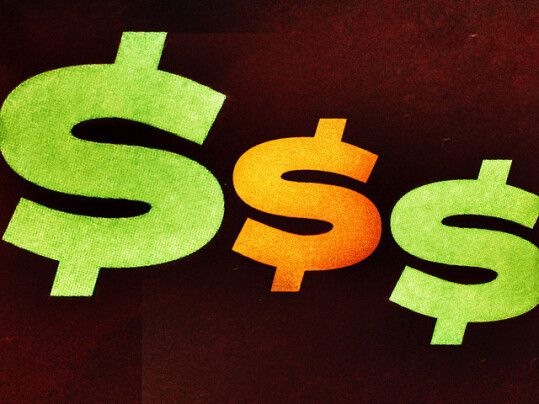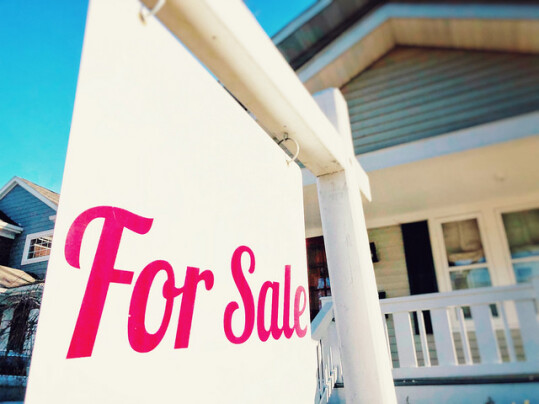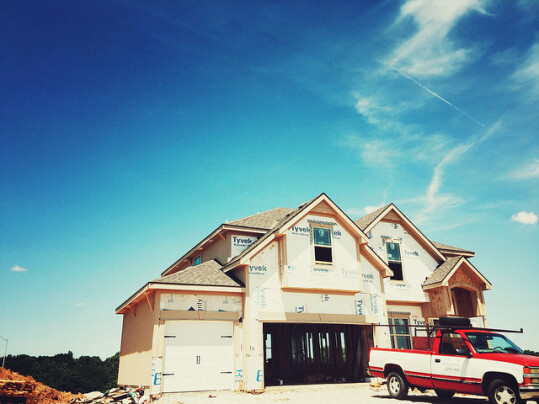Sales of newly built, single-family homes rose 1.6 percent in December, according to new numbers released by the U.S. Census Bureau and the Department of Housing and Urban Development. The increase was the first month-over-month improvement since July and puts new home sales 15.2 percent higher than they were in December 2020. Overall, new home sales ended the year 18.8 percent higher than in 2019, making it the best year in more than a decade. It’s yet another sign of the housing market’s continued strength. Boosted by low mortgage rates and elevated buyer demand, the market has been a bright spot, helping to drive an economy damaged by the effects of the coronavirus pandemic. But while the market is strong, affordability remains a concern. The report found that the median sales price of new homes sold in December was $355,900, which is about 8 percent higher than last year at the same time. The average sales price was $394,900. (source)
Archive for January 2021
Mortgage Demand Up 16% From Last Year
According to the Mortgage Bankers Association’s Weekly Applications Survey, demand for loans to buy homes is now 16 percent higher than it was last year at the same time, continuing a trend that started in the second half of last year. Joel Kan, MBA’s associate vice president of economic and industry forecasting, says purchase activity and average loan size have been climbing since last spring. “Activity was up 16 percent from a year ago, and the average purchase loan amount hit another record high of $395,200,” Kan said. “Since hitting a recent low in April 2020, the average purchase loan amount has steadily risen – in line with the accelerating home-price appreciation occurring in most of the country because of strong demand and extremely low inventory levels.” Also in the report, average mortgage rates were up and down last week. Increases were seen for 30-year fixed-rate loans with conforming loan balances, but 15-year fixed-rate loans, jumbo loans, and those backed by the FHA all saw declines. The MBA’s weekly survey has been conducted since 1990 and covers 75 percent of all retail residential mortgage applications. (source)
Latest Price Data Shows Values On The Rise
The S&P Case-Shiller Home Price Indices have been considered among the leading measures of US home prices for decades. According to their most recent release, prices are still rising, continuing a streak that dates back to last summer. In fact, the data – which covers home values through the end of November – shows increases have actually accelerated. Craig Lazzara, managing director and global head of index investment strategy at S&P, says the most recent increase was the biggest since February 2014. “As COVID-related restrictions began to grip the economy last spring, their effect on housing prices was unclear,” Lazzara said. “Price growth decelerated in May and June before beginning a steady climb upward. November’s report continues that acceleration in particularly impressive manner. The National Composite last matched this month’s 9.5 percent growth rate in February 2014, more than six and a half years ago.” A lower than normal number of homes for sale is the main factor pushing prices higher. As spring approaches, and more homes are listed for sale, prices should begin to moderate from their current pace. (source)
Annual Home Sales Hit 14-Year High In 2020
The number of previously owned homes sold last year was the most in any year since 2006, according to a new report from the National Association of Realtors. Sales of existing homes reached 5.64 million in 2020, a 5.6 percent increase over the year before. Lawrence Yun, NAR’s chief economist, says the gains will likely continue. “Home sales rose in December, and for 2020 as a whole, we saw sales perform at their highest levels since 2006, despite the pandemic,” Yun said. “What’s even better is that this momentum is likely to carry into the new year, with more buyers expected to enter the market.” There are a couple of reasons Yun believes buyers will be active this year. One is mortgage rates, which are expected to rise slightly but remain historically low. The other is improving economic conditions due to additional stimulus and distribution of the coronavirus vaccine. This combination makes it likely the housing market will have another busy year in 2021. (source)
Is It Time To Check Your Credit Score?
Your credit score is the kind of thing that’s easy to forget about until you need it. It doesn’t seem to matter much, until it’s the difference between getting approved for a loan and being denied. Fortunately, if you check your score and do what you can to improve it, you can avoid this predicament. You just have to give yourself enough time. But how long do you need? Well, according to MyFICO – the official consumer division of FICO – it depends on the type of financing. If you’re looking to finance a cell phone or get a new credit card, you don’t have much to worry about. A better score will get you better terms, but you’ll likely be approved even if your score needs some help. The stakes, however, are a bit different when you’re applying for a mortgage. If you’re asking to borrow hundreds of thousands of dollars, you have to be able to show you’re responsible with your money and able to pay off your debts. That’s why MyFICO suggests checking your score at least six months to a year before shopping for a new house. Having time to raise your score will, not only, put you in a better position to qualify for a loan, it’ll also help get you the best mortgage rate once you’re approved. (source)
Builders Remain Confident In New Home Market
Home builders know the housing market better than most. That’s why the National Association of Home Builders surveys them each month to measure how confident they are in the market for newly built, single-family homes. After all, if builders are optimistic, it’s a good indicator that the market is strong and buyers are interested. According to the NAHB’s most recent release, they are and it is. Their January Housing Market Index scored an 83 on a scale where any number above 50 indicates more builders view conditions as good than poor. But while 83 is just below an all-time survey high, it’s a three point drop from last month. Robert Dietz, NAHB’s chief economist, says the decline is mostly due to the challenges of rising material costs and a lack of available lots. “While housing continues to help lead the economy forward, limited inventory is constraining more robust growth,” Dietz said. “A shortage of buildable lots is making it difficult to meet strong demand and rising material prices are far outpacing increases in home prices, which in turn is harming housing affordability.” (source)
Loans To Buy Homes Up 15% From Last Year
According to the Mortgage Bankers Association’s Weekly Applications Survey, demand for loans to buy homes rose 3 percent last week and is now 15 percent higher than it was last year at the same time. The improvement is yet another sign of the housing market’s continued strength. Joel Kan, MBA’s associate vice president of economic and industry forecasting, says home buyers are looking for newer, larger, and more expensive homes. “Purchase applications remain strong based on current housing demand, rising over the week and up a noteworthy 15 percent from last year,” Kan said. “Home buyers in early 2021 continue to seek newer, larger homes. The average loan size for purchase loans jumped to $384,000, the second highest level in the survey.” Also in the report, average mortgage rates rose from the week before. Increases were seen across all loan categories, including 30-year fixed-rate loans with both conforming and jumbo balances, loans backed by the FHA, and 15-year fixed-rate loans. Despite the increase, rates remain near all-time lows. (source)







